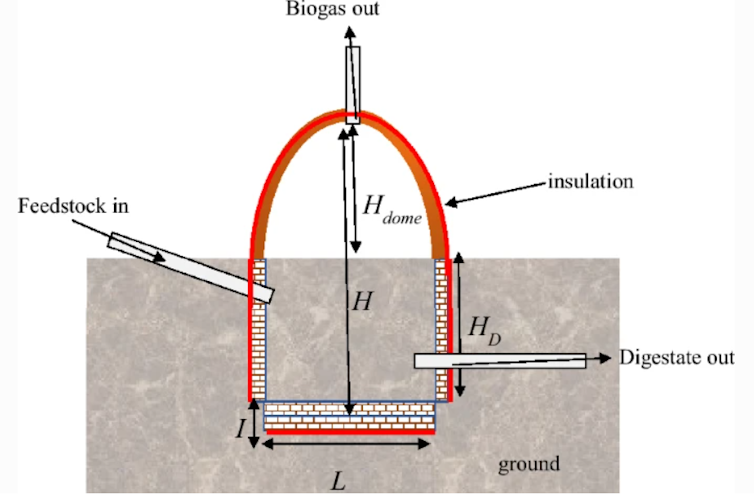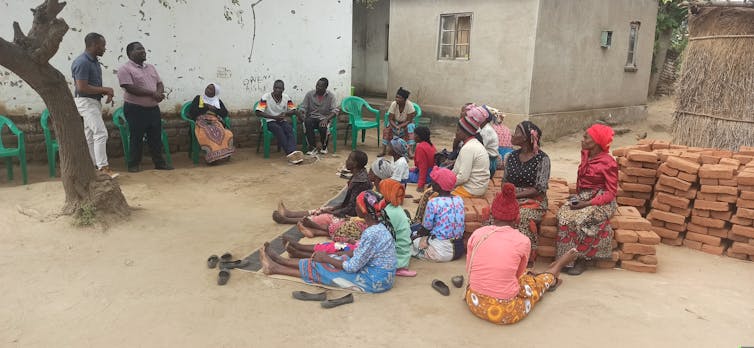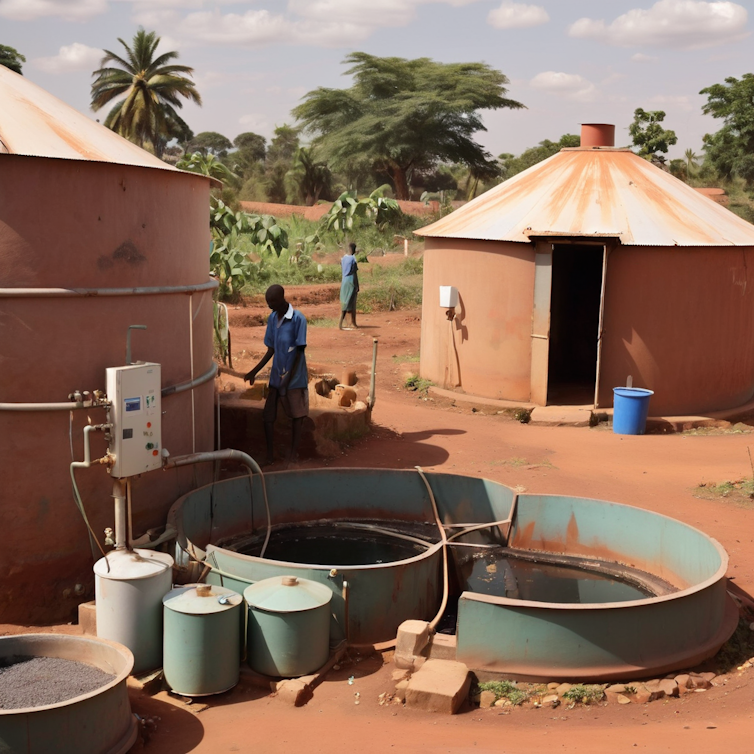By Ehiaze Ehimen, Thomas Robin
In sub-Saharan Africa, over 600 million people (more than 50% of the population) are without access to electricity. Malawi has one of the world’s lowest electricity access rates – just 14.1% of the total population have access to the main grid. In rural areas, the electrification access rate is even lower, estimated at 5.6% in 2021.
Decentralised household and community scale renewable energy systems like biogas plants may provide a solution. Ehiaze Ehimen and Thomas Robin study energy efficiency and energy poverty in marginalised communities. They unpack what they found in their research into the potential role of small biogas plants in meeting rural energy needs.
Why are biogas plants such a good idea?
Biogas plants are easy to set up and can be relatively inexpensive. They use readily available materials such as manure and vegetable waste, and can be built with cement and bricks. They could potentially be used to meet the electricity needs of households and small communities, especially in rural areas where connection to the national electricity grid may not be economically viable.
Biogas plants exploit the fact that rural communities in countries like Malawi have abundant biomass resources such as agricultural residues, animal waste and organic municipal waste (grass and vegetables that have been thrown away). Biogas production can therefore provide a decentralised energy solution – where energy is produced close to where it is used.

Compared to other energy sources (especially electricity), biogas production systems can be relatively low-cost to set up and operate. This makes them suitable for communities with limited financial resources.
There are also environmental and health benefits – they prevent organic waste from rotting on dumps and releasing harmful methane gas by instead converting this waste into a useful energy source. They reduce people’s reliance on traditional biomass fuels like firewood or charcoal for cooking – these fuels can lead to deforestation and indoor air pollution. This is currently a significant issue in Malawi. Between 2002 and 2023, Malawi lost 21% of its humid primary forest to deforestation. And people are experiencing an increasing number of chronic coughs from cooking on wood fires.
What is a biogas plant?
A biogas plant is a facility that converts organic waste, such as animal manure, agricultural residues, food waste and even sewage sludge into gas. It does this through a process called anaerobic digestion. Here, the organic materials are broken down by microorganisms in an oxygen-free environment, such as the inside of a sealed drum.
This produces biogas, which is primarily composed of methane and carbon dioxide. It can be used as a renewable energy source for electricity generation, heating and cooking.
A biogas plant has a lifespan of 20 years and could be constructed with several designs. A common design includes the plant made up of:
- A base with a rectangular shape
- On the top, a dome made of brick and concrete and a plastic layer. This could be above the ground or underneath to keep the temperature uniform in the digester and to limit temperature fluctuation
- The central part of the reactor is based underneath the ground
- There are two auxiliary tanks to store the feedstock and the digestate (what is left over)
- A thin concrete slab can be added to avoid leakage in the ground.

What did you find?
Our study was the first to investigate whether it was possible to produce electricity for rural Malawi farmers using biogas. The only small scaled biogas plants that existed in Malawi before our study were situated at Zomba Central Hospital and Mikuyu prison, but these were used to meet cooking needs only.
Our research found that a small community-scale biogas plant with a digester volume of 15 cubic metres in Malawi cost a total of US$1,540 to build. This size biogas plant can provide enough energy for a family of up to five people to do all their cooking for a month.

The biggest costs – US$1,089 – were the cement and the labour – skilled bricklayers who had an understanding of leakproofing and insulation and who could guarantee that good quality materials would be used. It was a simplified rectangular based dome reactor design, which is primarily made of brick and concrete, with a plastic layer to minimise gas leakages.
Read more: Home biogas: turning food waste into renewable energy
The cost can vary depending on the size of the biogas plant, transport costs for materials, local regulations, labour costs and the amount of cow dung and maize or grass residue that is available to feed into it. We used the manure collected from six cows every day for a year. This was 10.8kg of manure produced daily. The methane quantity produced is estimated to improve significantly when the cow dung is mixed with grass cuttings and post-harvest maize plants – the leaves and husks that are left lying on the farmlands after the harvest.
The digestate left over after the anaeorbic digestion is very rich in nutrients such as nitrogen, potassium and phosphorus and can be spread directly on farmlands as fertiliser.
What are the challenges?
Access to financing to build the biogas plants is a big problem, especially for small-scale farmers or community-based initiatives. Malawi is one of the poorest countries in the world, and the number of people living on less than US$2.15 a day is predicted to rise to 72% of the population this year. For a rural smallholder farmer who earns an average of US$380 per year, the initial cost of constructing and operating a biogas plant is likely to be unaffordable.
There is also currently a lack of local capacity and technical expertise for setting up and maintaining biogas production, especially in some rural areas. Training programmes would be necessary.
Our study also showed that building larger biogas facilities would be more cost and operationally effective, because they’d provide more energy for a greater number of people at less cost per person. But the transport to truck huge amounts of biomass feedstock is not in place.
Financial support from governments, non-profit and non-governmental organisations, and international development agencies could therefore be essential to overcome these challenges.




